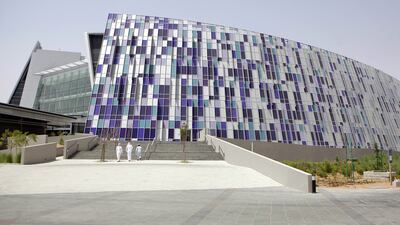In April last year, Bloomberg journalist Michael McDonald wrote an article describing the decline of small colleges and universities in the United States. He pointed out some very disturbing facts.
In the US, the number of private four-year colleges that have closed or were acquired doubled from about five a year before 2008 to about 10 in the four years to 2011. The statement was based on a study in 2013 by researchers at Vanderbilt University.
Among all colleges, 37 merged in the three years to 2013, more than triple the number that merged from 2006 to 2009, according to directory publisher Higher Education Publications.
All of the schools in the Vanderbilt study that closed had fewer than 1,000 students.
I see the potential for several higher education institutions to close or merge in the next 10 years in this country unless they take action. Here are some reasons why.
Firstly, too many schools have a small student body. There are at least 113 registered higher education schools in the UAE with at least another four coming into operation within the next year. The vast majority are privately held. Sixty institutions have enrolments under 1,000 and 47 under 500.
Secondly, 30 per cent of the institutions are not accredited by the Commission for Academic Accreditation.
Many of these are registered in academic free zones in Dubai and Ras Al Khaimah. The Government only recognises schools that have been approved by the CAA.
If a student graduates from a free-zone school and it is not CAA approved, the degree is only recognised in the home emirate. This limits the job opportunities of graduates.
The higher education market here is also highly cost competitive. At the 100 private and branch-campus schools, tuition fees for an undergraduate range from Dh40,000 to Dh60,000 a year.
Universities are competing for students in the UAE and throughout the Middle East, Asia and Africa.
Recruiting students is very expensive and the average student applies to six to 10 schools. Of the students who do enrol, a significant number will drop out or transfer in the first year for a variety of reasons including academic or personal issues. Universities need to be more proactive in student retention.
There is also the issue of staff retention. While some institutions offer good compensation packages, many have a high staff turnover. This is caused by factors including low salaries and few pay rises, and it is prevalent in institutions with small enrolments.
Reputation also plays a part. Organisations such as The Times Higher Education World University Rankings and QS World University Rankings have produced lists of world rankings, with various subsections such as "top Arab universities". These have become increasingly popular with students, parents and counsellors. However, the ranking reports skew towards reputation and research-focused institutions rather than teaching-orientated or career-focused schools. Smaller schools are rarely research-oriented and do not receive recognition.
The costs associated with maintaining and updating a university campus facility are also high. Ongoing expenses include utilities, IT infrastructure, insurance, phone systems, sports facilities and maintenance. Some of the less visible expenses involve financing new construction and campus projects, and revenue inconsistencies. The cost of loans to build campuses is significant and must be added to the overall operating costs. All of these items must be factored into what to charge for tuition.
Which universities may face challenges is not predetermined, but at least 60 could fall into this category. It is up to the institutions themselves to take steps to remain ahead of the competition.
Dean Hoke is principal and co-founder of education consulting firm Edu Alliance Ltd

